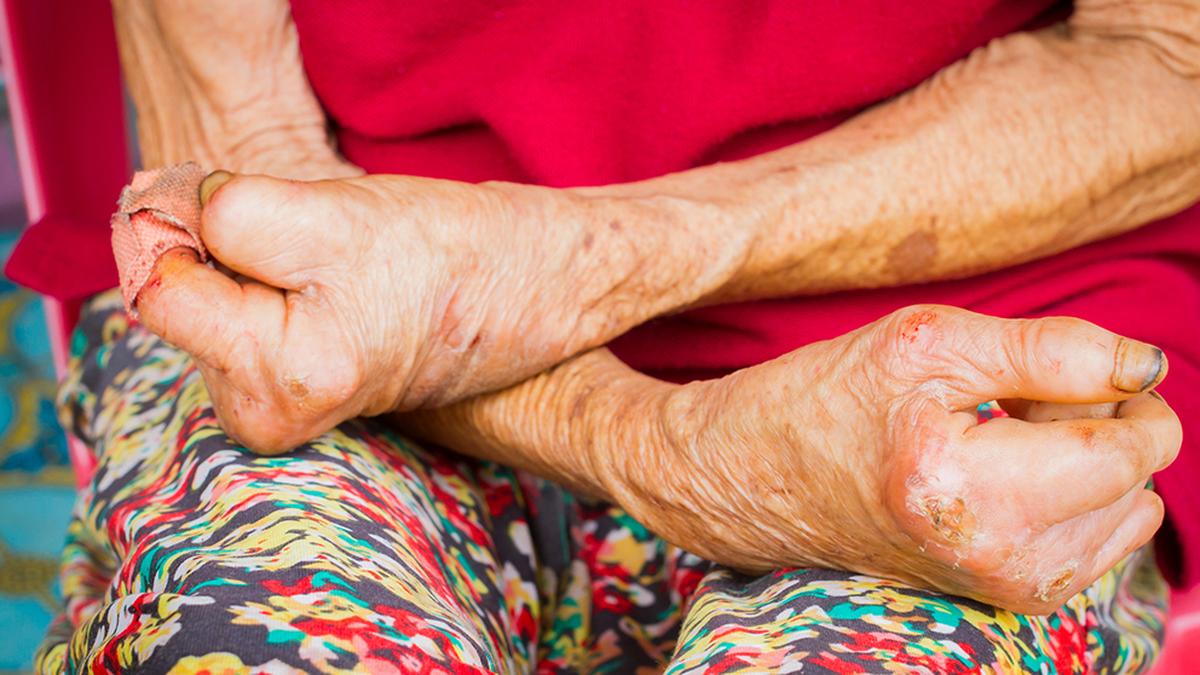
The link between leprosy and climate-change that we did not know about: an Indian story Premium
The Hindu
Leprosy resurfaces in India due to climate change, poverty, and stigma, demanding urgent interventions and visibility.
When Sharadindu Ghosh* was young, he was taught not to speak about his father’s leprosy. He, like many others, grew up in the lanes of Jamuria Leprosy Colony, in West Bengal, facing stigma and discrimination. Today, years after his father’s passing and an endless struggle through poverty, Ghosh is an electrical supervisor and a mentor to local children. “Among the uneducated population in India, people believe that this disease is given by God,” said Mervyn Basil, communications specialist at NGO Until No Leprosy Remains-India (NLR-India).
Leprosy was eliminated as a public health problem in India as per the World Health Organization’s criteria of less than 1 case per 10,000 population, at the national level, in 2005. However now, experts say, it is quietly resurfacing, particularly in climate stressed States including West Bengal and Bihar. Floods, displacement and overcrowding have become frequent, leading to these States seeing the disease re-emerge in pockets.
Also Read: Health Ministry announces new treatment regimen for leprosy
India reported total 1,03,819 new leprosy cases for the year 2022-23 out of which grade 2 disability (G2D) cases were 2,363 (2.28%), amounting to 25% of the new G2D cases of the world, as per a statement given in the Lok Sabha in February 2024.
Extreme weather events do not affect all communities equally, and people affected by leprosy often face risks far beyond those encountered by the general population. Research presented by James Pender at the 21st International Leprosy Congress in 2022 highlighted how climate -induced disasters disproportionately affect leprosy-affected communities. Floods cause the loss of homes, crops and in some cases even access to shelters. Those with leprosy-related disabilities are often left behind in evacuation efforts and many face discrimination at relief camps. In Bangladesh, for instance, over 4,000 people affected by leprosy were impacted by severe flooding in 2017 and many were denied basic disaster relief.
India is ranked amongst the most climate-vulnerable nations globally and the intersection of disease, climate change and economic deprivation can further deepen the gaps. According to a report by the Leprosy Mission Trust India, States including Bihar, Jharkhand, Uttar Pradesh, Odisha and Chhattisgarh are also home to the largest proportion of people living in multidimensional poverty, meaning poverty that goes beyond money and wealth.
“Leprosy is a tropical disease and in tropical areas, there is a higher chance of this bacteria multiplying at a very rapid pace, and it’s quite possible that it will multiply quickly,” said Mr. Basil.

In October this year, India announced its intention to build Maitri II, the country’s newest research station in Antarctica and India’s fourth, about 40 forty-odd years after the first permanent research station in Antarctica, Dakshin Gangotri, was established. The Hindu talks to Dr Harsh K Gupta, who led the team that established it












